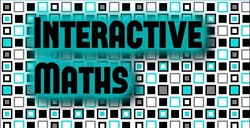Recently I sent my classes a survey to get some feedback on some areas of my teaching that I have changed in the last year or so. There were some useful comments, and I will provide an overview here.
Do you find these are helping your learning? - 100% said Yes.
And 67% said we should continue with them every lesson (the rest said maybe, none said no).
In the comments box there were a couple of interesting points:
- A few students wanted more variety in the form of the starters, one even suggesting Kahoot;
- I need to give them a little more time to complete them;
- Several students suggested I should ask them which topics to include for the following week.
Do you find the booklets useful? - 100% said Yes.
The best thing about the booklets was split mainly in three: the example problem pairs; the questions all being together; and it is a useful resource for revision.
A few of the things suggested to be improved:
- Including a contents page;
- Cosmetic issues (more space, hole punched, bound instead of staples);
- Include more/less exercises;
- Making a completed booklet available to catch up missed lessons.
Do you find the example problem pairs useful to your learning? - 100% said Yes.
No groundbreaking suggestions here, but all students like this way of doing examples. One student asked for more pairs to help them better understand.
Do you feel that the quizzes meet the purpose? 92% said Yes, the rest said sometimes.
The comments about the quizzes were all positive, although some said they were too long (it is sometimes hard to judge when using topics from a long time ago).
I completed weeks 3 and 4 of the Science of Learning course from Future Learn. Full blog posts on my reflections of these here:
I always start the unit of vectors with this clip from Despicable Me (https://www.youtube.com/watch?v=A05n32Bl0aY) and this time was no different. We discussed the meaning of direction and magnitude and then went on to look at the definitions and basics of vectors. When talking about the resultant of adding two vectors I made a big deal about walking around the classroom, starting at my desk and walking to a column in the middle of the room. I have to walk via two separate vectors to get there because of desks in the way.
I called one vector a and the other vector b and we looked at a+b and how it was the same as b+a. We then looked at going backwards to the desk, and that this was the vector -a-b (or -b-a). The we talked about where I would end up if I did a-b, b-a, 2a, etc.
The movement really helped the students get what we meant by vectors, and moving on to questions was relatively easy. This linked to something that came up on the Science of Learning course about multisensory learning. In future I think I will make a bigger deal of this, perhaps go out to the field and set up some cones.
After a successful lesson a couple of weeks ago on quadratics, I had a bit of a trainwreck lesson this week on general graphs. Students have to recognise linear, quadratic, cubic, reciprocal and exponential graphs for the IGCSE, and be able to determine the equations using points on the graph. My plan was to show a few examples of each, then get students on desmos to explore with the sliders what the different constants affected. I really misjudged the amount of structure and scaffolding they would need for this task. We got there in the end, but I had to improvise a lot of questioning to guide them to what they needed to find.
The following lesson I did make use of the "graph dances" by asking students to show me the shapes of graphs with their arms under different conditions, and at least some were able to do bits of that, so I guess it wasn't a total flop. Over the next few lessons I am going to have to patch the holes, probably with more dancing, and lots of mini whiteboards!
 RSS Feed
RSS Feed
